The concept of using dental lasers for the treatment of periodontal disease elicits very strong reactions from both ends of the spectrum. Everyone has an opinion. Everyone is certain that his or her own opinion is correct, but the only certainty is confusion and the lack of clear direction in the concept of laser assisted periodontal therapy (LAPT).
Much of this uncertainty stems from not comparing ‘apples to apples’ in terms of the type of lasers utilized and the way that studies are designed. Certain lasers are used specifically for soft-tissue treatment.
These include the CO2, Nd:YAG and diode lasers. Others can be used for both soft- and hard-tissue applications. These are the Er:YAG, Er and Cr:YSGG lasers. They must be compared within their own category.
Many of these lasers have been shown to provide periodontal treatment benefits. In order to achieve an element of clarity and simplicity on this very complex topic, the following discussion exclusively addresses the use of the diode laser for periodontal treatment.
A specific instrument
The diode laser has become an important tool in the dental armamentarium due to its exceptional ease of use and affordability. It also has key advantages with regard to periodontal treatment. The diode laser is well absorbed by melanin, haemoglobin and other chromophores that are present in periodontal disease.1
Thus, the diode specifically targets unhealthy gingival tissues. The laser energy is transmitted through a thin fiber that can easily penetrate into deep periodontal pockets to deliver its therapeutic effects.
The 2002 American Academy of Periodontology statement regarding gingival curettage2 proposes that “gingival curettage, by whatever method performed, should be considered as a procedure that has no additional benefit to SRP alone in the treatment of chronic periodontitis.”
Also stated is that all the methods devised for curettage “have the same goal, which is the complete removal of the epithelium” and “none of these alternative methods has a clinical or microbial advantage over the mechanical instrumentation with a curette.”
This was the science in 2002. More recent studies have shown that instrumentation of the soft periodontal tissues with a diode laser leads to complete epithelial removal while instrumentation with conventional curettes leaves significant epithelial remnants.3
An effective instrument: bactericidal
Periodontal disease is a chronic inflammatory disease caused by a bacterial infection. Hence, the bactericidal and detoxifying effect of laser treatment is advantageous in periodontal therapy.4 The diode laser’s bactericidal effectiveness has been well-documented.5–8
Moreover, there is a significant suppression of A. Actinomycetemcomitans, an invasive bacterium that is associated with aggressive forms of periodontal disease that are not readily treated with conventional scaling and root planing (SRP).
A. Actinomycetemcomitans is not only present on the diseased root surface, but it also invades the adjacent soft tissues, making it difficult to remove by mechanical periodontal instrumentation alone.7–10 This necessitates the use of adjunctive antibiotic therapy.10
The diode laser provides a non-antibiotic solution. A. Actinomycetemcomitans has also been found in atherosclerotic plaques,11 and there has been evidence to suggest that subgingival A. Actinomycetemcomitans may be related to coronary heart disease.12 This makes it even more compelling to seek methods to control this aggressive pathogen.
Wound healing
Diode lasers are very effective for soft-tissue applications including incision, hemostasis and coagulation.13 Many advantages of the laser vs. the scalpel blade have been discussed in the literature. These include a bloodless operating field, minimal swelling and scarring, and much less or no postsurgical pain.14,15
When laser surgical procedures are carried out, the surface produced heals favorably as an open wound without the need for sutures or surgical dressings.4 Studies have shown enhanced, faster and more comfortable wound healing when the diode laser is used in conjunction with SRP.7
An adjunct to scaling and root planing
There is very compelling evidence in the dental literature that the addition of diode laser treatment to SRP (the gold standard in non-surgical periodontal treatment) will produce significantly improved results. After SRP, the diode laser is used on the soft-tissue side of the periodontal pocket to remove the inflamed soft tissue and reduce the pathogens.16
Research has demonstrated better removal of the pocket epithelium compared with conventional techniques.3 Many studies have shown increased reduction of bacteria (especially specific periopathogens) when diode lasers are utilized after SRP.5,17,18
Significant improvement in decontamination and effective treatment of peri-implantitis also occurs with the addition of diode laser therapy.19
Gingival health parameters are significantly improved with the addition of the diode laser to SRP. Studies have shown decreased gingival bleeding17,20, decreased inflammation and pocket depth16,17, as well as decreased tooth mobility and decreased clinical attachment loss.16
This improvement in gingival health remains more stable than with conventional SRP treatment alone and tends to last longer.21 Moreover, patient comfort is significantly enhanced during the postoperative healing phase with the addition of diode laser therapy.7
The research thus shows diode laser periodontal treatment to be an effective procedure. It is also a minimally invasive procedure. Patients are demanding less surgery and the diode laser provides the general dentist with an excellent means of keeping periodontal treatment in the general practice.
A safe instrument
Histological testing of roots where the diode laser was used after SRP demonstrated no detectable surface alteration to root or cementum. There were no signs of thermal side effects in any of the teeth treated.22
Many studies have specifically indicated no adverse tissue events, demonstrating the safety of the diode laser.5,8,17,23
The diode laser’s very effective bactericidal action on periodontal pathogens makes the adjunctive use of antibiotics unnecessary.10 This eliminates the problem of bacterial resistance and systemic side effects engendered by antibiotic use.6 The laser is a safer, more effective treatment.
The protocol thus far
The research cited above has demonstrated that the use of the diode laser after conventional SRP is superior to SRP alone. Various protocols have been developed by clinicians to incorporate this treatment into the busy dental practice.
These protocols may be performed by the dentist and/or the hygienist as determined by the regulating organization in the geographic location of the dental practice.
Individual parameters vary depending on the clinician and the particular diode laser that is being used. However, most protocols do follow a simple formula.
The hard side of the pocket (tooth and root surface) is first debrided with ultrasonic scalers and hand instrumentation (Fig. 1).
This is followed by laser bacterial reduction and coagulation of the soft tissue (epithelial) side of the pocket1 (Figs. 2, 3).
The laser fiber is measured to a distance of one millimeter short of the pocket depth. The fiber is used in light contact with a sweeping action that covers the entire epithelial lining, from the base of the pocket upward.24 The fiber tip is cleaned often with a damp gauze to prevent the buildup of debris.
Re-probing of treated sites should not be attempted for three months postoperatively (Fig. 4) because healing starts at the base of the pocket and the new tissue remains fragile for this period of time.1
The power settings and time parameters are determined by the particular laser used. The diode laser clinician must take training on the specific laser that will be used in the practice to be fully able to implement laser assisted periodontal therapy.
With experience, the user will feel comfortable enough to adapt the protocol to his or her particular practice.
In the future, protocols will be modified and fine-tuned by various laser user groups after discussion of their experiences and results.
These results will be incorporated into new procedures that will bring laser-assisted periodontal therapy to a newer, more effective level.
The time has come
The time has come to embrace the routine use of lasers for the treatment of periodontal disease. The diode laser has been shown to be effective and safe for this purpose. If not now, when?
Patients need treatment. Laser-assisted periodontal therapy is non-invasive. With the diode laser there is a reduced need for systemic or locally applied antimicrobials. This leads to fewer allergic reactions and antibiotic resistance.
There is significant proof that the addition of laser-assisted periodontal therapy to conventional scaling and root planing improves outcomes. This is particularly compelling when considering the periodontal health and systemic health link.
It is time to open our minds to laser technology and apply the treatment that is in the best interest of our patients.
A complete list of references is available from the publisher.
embedImagecenter("Imagecenter144",144);
About the author
Dr Fay Goldstep sits on the Oral Health Editorial Board (healing/preventive dentistry), has served on the teaching faculties of the post-graduate programs in esthetic dentistry at SUNY Buffalo, the University of Florida (Gainesville) and the University of Minnesota (Minneapolis), and is a former ADA Seminar Series featured speaker. Goldstep is a consultant to a number of dental companies, and she maintains a private practice in Markham, Ontario, Canada. She can be reached at goldstep@epdot.com.
NEW YORK, NY, USA: With international certifications now in place for its Picasso diode laser, AMD LASERS is poised for continued growth in North America as...
ANAHEIM, CA, USA: AMD LASERS, the company that builds the world’s most affordable dental laser technology, announces the launch of the Picasso soft ...
While dental lasers have been commercially available for several decades and their popularity among patients is unparalleled, the dental profession has ...
Dental implants are placed either utilizing a one-stage approach (healing abutment placed at implant placement) or a two-stage approach (implant is covered ...
LEIPZIG, Germany: A new webinar, to be presented by the Biolase Campus on July 15, will demonstrate a laser supported concept for periodontal therapy, ...
While placental tissues have been used in medical procedures for more than 100 years,[1,2] Snoasis Medical pioneered their use in dentoalveolar applications...
NEW YORK, NY, USA/LEIPZIG, Germany: The US-based manufacturer AMD LASERS recently launched the Picasso Lite in dental markets worldwide. As a first in the ...
Dental implants are placed either utilizing a one-stage approach (healing abutment placed at implant placement) or a two-stage approach (implant is covered ...
Pulsed Nd:YAG dental lasers are surgical tools used to obtain specific surgical objectives as defined in the LANAP (laser-assisted new attachment procedure)...
The ADSO Summit is back. This March, the dental industry will gather in Austin, Texas, for this stand-out event that brings innovation, connection and ...
Live webinar
Thu. 22 January 2026
9:00 AM EST (New York)
Prof. Judith Jones D.D.S; M.P.H., Prof. Kakuhiro Fukai D.D.S., Ph.D, Dr. Bathsheba (Bethy) Turton
Live webinar
Thu. 22 January 2026
2:00 PM EST (New York)
Dr. Nicola M. Grande DDS, PhD
Live webinar
Wed. 28 January 2026
8:00 AM EST (New York)
Live webinar
Wed. 28 January 2026
11:00 AM EST (New York)
Prof. Dr. Jan-Frederik Güth
Live webinar
Wed. 28 January 2026
11:00 AM EST (New York)
Dr. Algimante Lošytė – Jančė
Live webinar
Wed. 28 January 2026
12:00 PM EST (New York)
Live webinar
Wed. 28 January 2026
1:00 PM EST (New York)
Dr. Marina Siegenthaler Dr. med. dent. eidg. dipl. Zahnärztin SSO



 Austria / Österreich
Austria / Österreich
 Bosnia and Herzegovina / Босна и Херцеговина
Bosnia and Herzegovina / Босна и Херцеговина
 Bulgaria / България
Bulgaria / България
 Croatia / Hrvatska
Croatia / Hrvatska
 Czech Republic & Slovakia / Česká republika & Slovensko
Czech Republic & Slovakia / Česká republika & Slovensko
 France / France
France / France
 Germany / Deutschland
Germany / Deutschland
 Greece / ΕΛΛΑΔΑ
Greece / ΕΛΛΑΔΑ
 Hungary / Hungary
Hungary / Hungary
 Italy / Italia
Italy / Italia
 Netherlands / Nederland
Netherlands / Nederland
 Nordic / Nordic
Nordic / Nordic
 Poland / Polska
Poland / Polska
 Portugal / Portugal
Portugal / Portugal
 Romania & Moldova / România & Moldova
Romania & Moldova / România & Moldova
 Slovenia / Slovenija
Slovenia / Slovenija
 Serbia & Montenegro / Србија и Црна Гора
Serbia & Montenegro / Србија и Црна Гора
 Spain / España
Spain / España
 Switzerland / Schweiz
Switzerland / Schweiz
 Turkey / Türkiye
Turkey / Türkiye
 UK & Ireland / UK & Ireland
UK & Ireland / UK & Ireland
 International / International
International / International
 Brazil / Brasil
Brazil / Brasil
 Canada / Canada
Canada / Canada
 Latin America / Latinoamérica
Latin America / Latinoamérica
 China / 中国
China / 中国
 India / भारत गणराज्य
India / भारत गणराज्य
 Pakistan / Pākistān
Pakistan / Pākistān
 Vietnam / Việt Nam
Vietnam / Việt Nam
 ASEAN / ASEAN
ASEAN / ASEAN
 Israel / מְדִינַת יִשְׂרָאֵל
Israel / מְדִינַת יִשְׂרָאֵל
 Algeria, Morocco & Tunisia / الجزائر والمغرب وتونس
Algeria, Morocco & Tunisia / الجزائر والمغرب وتونس
 Middle East / Middle East
Middle East / Middle East
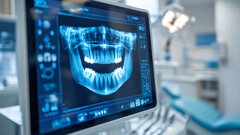
































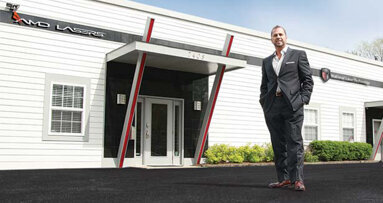
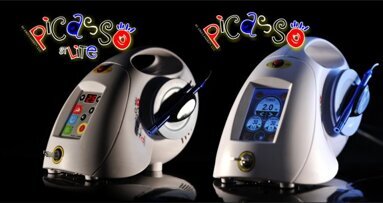

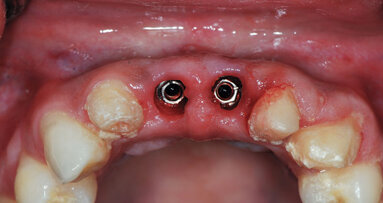


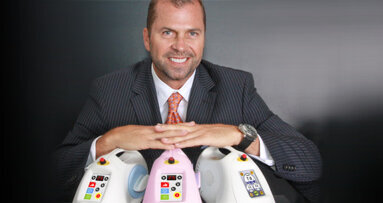

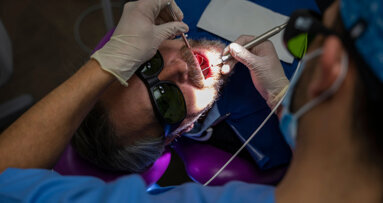

















To post a reply please login or register